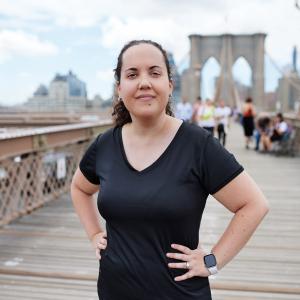
Mark V. Sherrid, MD, director of NYU Langone’s Hypertrophic Cardiomyopathy Program, discusses a patient scan with surgical director Daniel G. Swistel, MD.
Photo: Karsten Moran
Doctors at NYU Langone’s Hypertrophic Cardiomyopathy Program treat 3,000 patients who have this difficult-to-diagnose form of heart disease. Hypertrophic cardiomyopathy (HCM) restricts the flow of blood between the heart’s chambers. The condition can be disabling and, in some cases, fatal. Learn about the personalized approach that has made the center the largest of its kind in New York State.
The Need
Every week, cardiologist Mark V. Sherrid, MD, sees new patients whose chronic symptoms—shortness of breath, chest tightness, and periodic blackouts—had previously been misdiagnosed. They had been told they had conditions like exercise-induced asthma, panic attacks, depression, coronary artery disease, or mitral valve prolapse, yet the treatments, predictably, weren’t working. Finally, an observant cardiologist helps these patients learn the truth: they have a genetic heart disease affecting 1 in 500 people that causes the wall between the heart’s chambers to thicken, restricting the flow of blood.
The condition, called hypertrophic cardiomyopathy, can be disabling and potentially fatal. “HCM is the great masquerader of cardiology, because it looks like a lot of other conditions,” says Dr. Sherrid, director of NYU Langone Health’s Hypertrophic Cardiomyopathy Program, “and it can end a patient’s life at a tragically young age.”
The Draw
Cardiologists generally refer patients with HCM to a center that specializes in the disease. Many in the tristate area wind up in the office of Dr. Sherrid, who has contributed to its improved prognosis during the past two decades. “HCM used to have a high mortality rate, but in recent years, it’s become remarkably treatable, in most cases with a normal life expectancy,” says Dr. Sherrid.
Since their arrival at NYU Langone in 2015, he and surgical director Daniel G. Swistel, MD, have built the largest program in New York State, accredited as a Center of Excellence by the Hypertrophic Cardiomyopathy Association. Dr. Sherrid, in parallel with cardiologist Daniele Massera, MD, assistant professor of medicine at NYU Grossman School of Medicine, sees 350 new patients each year and follows 3,000 men and women ranging from 18 to their early 90s. “People routinely tell us that our care has transformed their quality of life,” Dr. Sherrid says.
The Approach
Since obstruction in the heart is often latent, and the characteristic murmur may be absent at rest, Dr. Sherrid often asks new patients to trigger it by eating a meal and then walking briskly on a treadmill right before undergoing an ultrasound of the heart. This diagnostic strategy helps point to medications that, in a majority of cases, reduce symptoms significantly. MRI can help identify patients at lifelong risk for sudden death. Patients whose HCM triggers an irregular heart rhythm are candidates for an implantable device, called a defibrillator, which emits an electric shock when needed to restore a normal heartbeat.
Those with severe obstruction may require surgery to thin out the wall between the heart’s chambers, called the septum, to increase blood flow to the body’s central artery, the aorta. Dr. Swistel has performed more than 600 of these complex repairs, among the most of any surgeon nationally, with about 95 percent of patients showing improvement.
Regardless of the treatment, Dr. Sherrid emphasizes the importance of moderate exercise and weight management, as early results from an NYU Langone study show that losing weight improves symptoms and may reduce heart wall thickness.
The News
NYU Langone has been at the forefront of surgical innovations for HCM. Dr. Swistel pioneered the technique of removing a portion of the mitral valve, which tends to become elongated in patients with the disease, further hindering the flow of blood. He and fellow HCM surgeon Deane E. Smith, MD, assistant professor of cardiothoracic surgery, are testing an investigational ultrasound probe to assess heart wall thickness in real time during septal reduction surgery and ensure that the optimal amount of tissue is removed. The program is enrolling patients in a phase 3 study of a novel medication to relieve obstruction, and Dr. Sherrid is leading a phase 1 clinical trial for another drug that has shown early promise.
“It’s a very exciting time in our field, with advances that are helping patients with HCM live longer, healthier lives,” says Dr. Sherrid.

